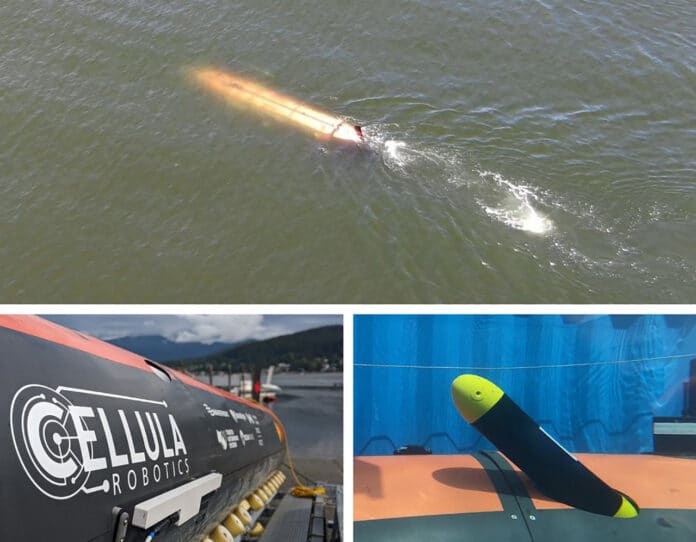While autonomous underwater vehicles (AUVs) are generally used for scientific studies, they can sometimes be used in more secretive applications, such as surveillance. Although some AUVs can travel deep underwater for days at a time, they must rise to the surface when it comes time to transmit the collected data to their users, as radio waves do not propagate well in water.
A new system helps hide their location by having them deploy a micro-AUV. The micro-AUV was designed by British company ecoSUB Robotics and has been experimentally installed on an existing installed hydrogen fuel cell powered Solus-LR AUV, made by Canada’s Cellula Robotics.
The company has announced the completion of various demonstration missions using the hydrogen fuel cell powered AUV. The missions demonstrated the remarkable autonomous launch of a micro-AUV from Solus-LR while submerged and underway.
Following the launch, the micro-AUV surfaced and transmitted a status message to Solus-LR’s command and control center via Iridium satellite. The operation was the first of its kind and demonstrated near real-time, over-the-horizon communications from a submerged AUV.
Built on a research and development project originally sponsored by DRDC under the All Domain Situational Awareness (ADSA) Science and Technology (S&T) Program that developed Solus-LR, the mission reinforced the capabilities and potential of a long-range, hydrogen fuel cell-powered AUV designed for submerged missions in excess of 2,000 km (1,243 miles). The AUV can descend to a depth of 3,000 meters (9,843 ft) and travel at a top speed of 2 meters per second.
The micro-AUV can independently move underwater up to several kilometers from Solus-LR before resurfacing. Even if the micro-AUV is visible, which is unlikely to be noticed because it is much smaller than its main vehicle, its surface location does not reveal Solus-LR’s current underwater location. It also sinks to the seafloor after transmitting. Thanks to this micro-AUV, autonomous underwater vehicles will now be able to transmit data without surfacing, and the vehicle’s location will not be revealed. Due to the underwater vehicle‘s location not being revealed, this technology could be used in future covert missions.
